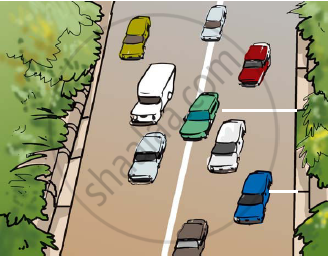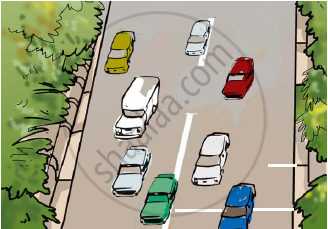Advertisements
Advertisements
Question
On a 120 km track, a train travels the first 40 km at a uniform speed of 30 km/h. How fast must the train travel the next 80 km, so as to average 60 km/h for the entire trip.
Solution
Train travels first 40 km at speed of 30 km/hr.
Time taken by train to cover this distance is = distance/speed = 40/30 = 4/3 hr.
Let speed of train to cover next 80 km is v .
Then time taken by train to cover these 80 km is 80/v.
Total time becomes T = 4/3 +80/v = ( 4v + 240)/3v.
Total distance= 120 km.
Average speed = 60 km/h (given)
However average is given by = total distance /total time.
So (120 X 3 X v)/(4v +240) = 60
360 v = 240v +14400
120v = 14400
v= 14400/120 =120 km/hr.
so train has to cover those 80 km at a speed of 120 km/hr.
APPEARS IN
RELATED QUESTIONS
The odometer of a car reads 57321.0 km when the clock shows the time 08:30 AM. What is the distance moved by the car, if at 08:50 AM, the odometer reading has changed to 57336.0 km? Calculate the speed of the car in km/min during this time. Express the speed in km/h also.
Suppose the two photographs, shown in Figure 1 and Figure 2, had been taken at an interval of 10 seconds. If a distance of 100 metres is shown by 1 cm in these photographs, calculate the speed of the fastest car.

Figure 1 Vehicles moving in the same direction on a road

Figure 2 Position of vehicles shown in Figure 1 after some time
Do speed and average speed of a body have the same meaning?
The relation S= v x t can easily be used to find the tota l distance covered by a body moving with non -uni form speed. (Yes/ no)
A quantity is measured to be -30 m/s. Is it speed or velocity?
Is the average speed during different time intervals for a uniform motion the same or different?
For a body moving along a circular path, show that:
Linear speed = Angular velocity X radius of the circle
The speed of a train is expressed in m/h.
The SI unit of speed is a kilometer.
Which of the quantities have the same SI unit?
